
Last year I decided to sail across the Atlantic.
I previously had spent 3 months learning how to sail in South Africa and figured that learning should be put to good use–otherwise there’s no point, is there?
After some quick research, I decided to join the 270 boats crossing the Atlantic with the Atlantic Rally for Cruisers (ARC) in November 2013:
“Every November since 1986 the Atlantic Rally for Cruisers (ARC) has set sail from Las Palmas, bound 2,700 nautical miles westward across the Atlantic to the Caribbean.”
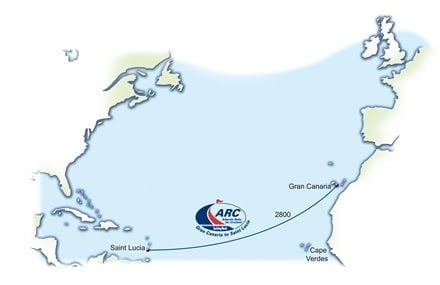
Nearly a year later, I can say this trip exceeded my expectations by far. It taught me a lot about resilience, dedication, practical thinking and creativity.
Sailing is exhilarating. Sailing with great and passionate people is paradise. Here’s a recap of my experience and what I learned.
How to find a boat: Persistence pays off
Finding a boat was a tricky part. Competition is fierce: There’s at least a 3:1 ratio between folks looking for a crossing and yachts offerings spots. Most skippers start gathering crews up to one year prior to departure.
So, what’s the best way to convince people that you are the best possible crew to cross the Atlantic when you don’t know anyone? Let’s email people!
Exactly one month prior to ARC’s start, I started contacting people. Of 27 emails sent, I got 19 replies: a 70% ratio is quite nice. 17 didn’t have any spot but agreed to keep an eye out, another 2 boats agreed to meet me for an interview in Gran Canaria.
I booked a one-way ticket to Grand Canaria, packed my stuff and printed business cards. If all else failed, they would come in handy when I walk the docks.
After two interviews, I got accepted onboard Dory. She’s a Bavaria 47 skipped by Jon and Trude, a very nice couple from Norway. They welcomed me on their boat and made us feel like a big family. We would be a total of 4 people on the water for about 3 weeks.

What to pack?
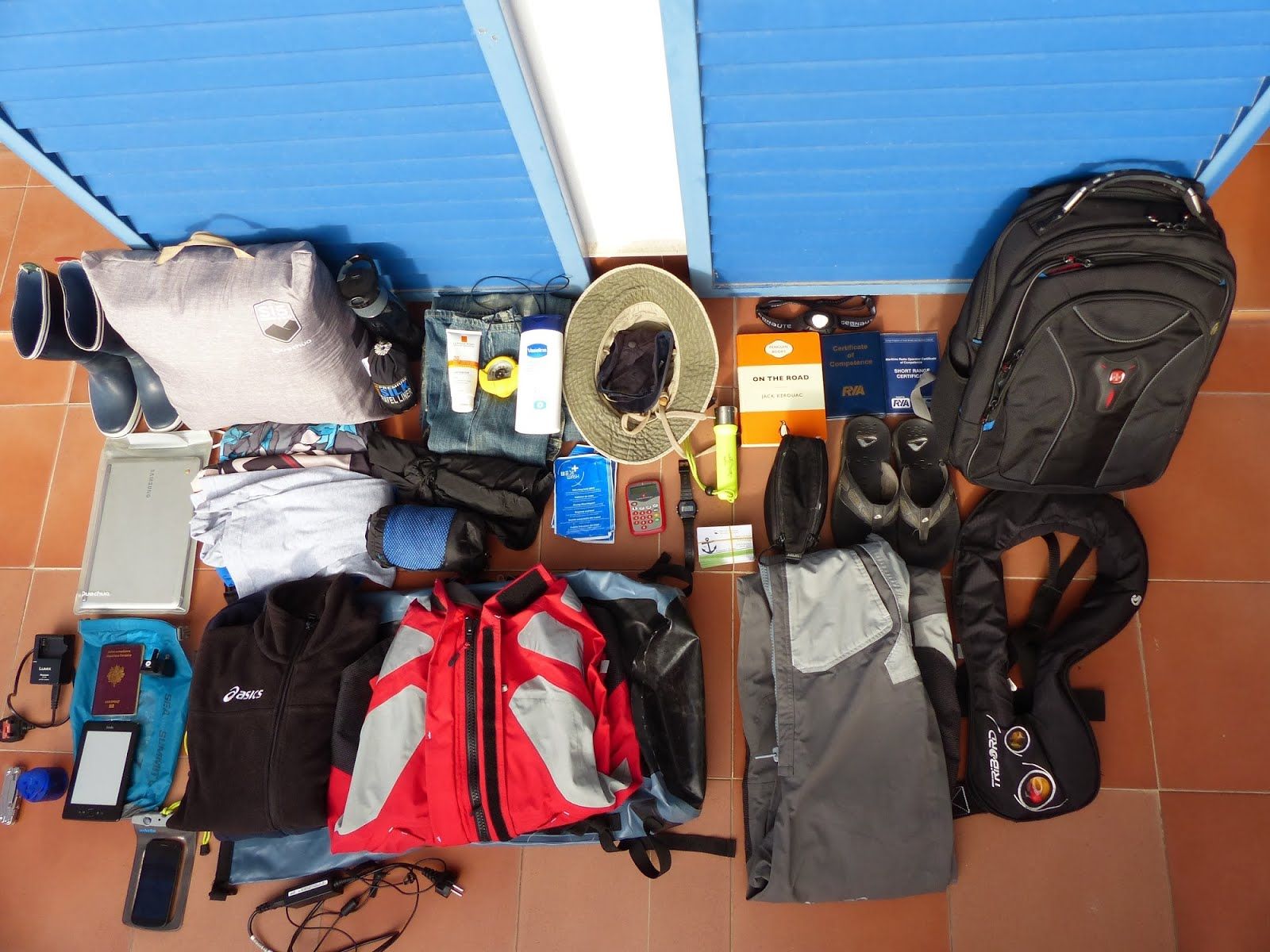
Crossing involved going through cold temperatures in the middle of the Atlantic at night to extremely warm in the Caribbean. Humidity was the only constant here.
What to bring: I made a list of everything I took with me. I immediately lost a few items, the usual.
Dory had a water maker (making sea water drinkable!), 3 solar panels, 1 wind mill, 1 electrical generator (gasoline) and about 300L of diesel in total, that was enough to make us energy sufficient for a month or more (electricity, water and fuel).
We left shore with great quantities of fruits, vegetables, and deep-frozen vacuum-packed meat (chicken/beef/pork/bacon). Usual snacks include peanuts, chocolate and fruits (limited supply!). Pictured here is about half of our food (and Trude looking delighted), including large amounts of Nutella.

Setting sail
It’s a strange feeling to go out knowing that you won’t be back on land for about a month. (My longest previous sailing trip was 4 or 5 days away at sea in South Africa.) It feels just like going out sailing for a day, but with a more adventurous taste to it.
We left Gran Canaria on Nov. 24, with an estimated arrival time of Dec. 15, give or take 5 days. Our departure day was incredible. About 10 friends and family members came around to the marina to wish us farewell on our journey.
The ARC s a big deal for the city of Las Palmas in Gran Canaria. It’s the world’s largest transatlantic cruising rally; about 200 boats leave the island on the same day. They treated us very well: fireworks the night before launch, a marching band and hundreds of locals and tourists watching us cast off on that Sunday afternoon.
Living on board: Finding a new rhythm
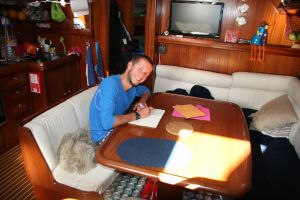
Our first day was filled with excitement. Our second and third days required some adjustments, we all felt the transition from the usual rhythm to the cruising life, slight dizziness and and feeling tired.
All your daily activities (especially eating & sleeping) are heavily affected by the weather. Small details like humidity have big impact on how you live aboard. When my cabin’s hatch was leaking, it took me about 3 days to find a weather window to empty my cabin and dry it all, including clothing, papers, electronics and bank notes.
Another time, while lying down in my cabin, the boat took a strange turn and I ended up upside down: As I stretched my legs, they found the roof/ceiling.
Every day, we take a daily turn for cooking and galley cleaning. I got to serve my almost famous “Cape Town curry” more than once, and Trude and Jon baked fresh bread every week! Cooking was quite a performance: Dory was often hit by waves, and heeling over quite a bit. I have no memory of cooking without holding on to something.
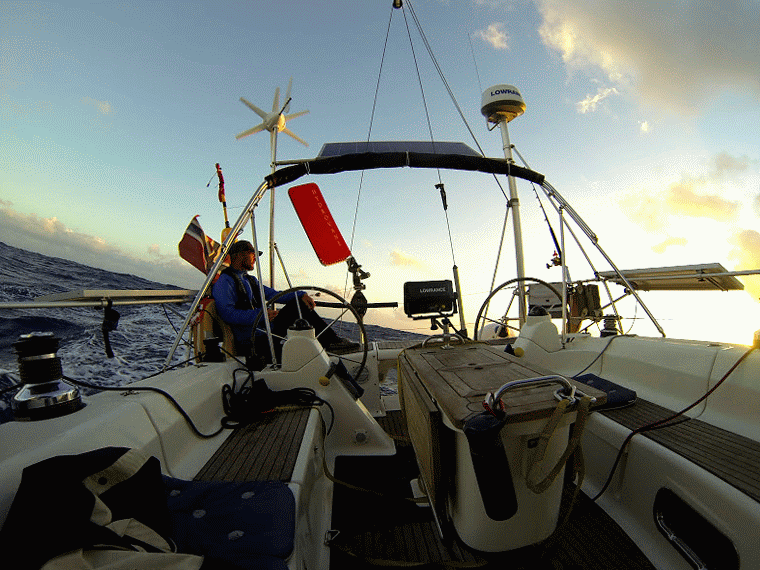
Some days, it was almost impossible to cook: Knives flew, boiling water was spilled and tomato sauce had an ongoing affair with the white couch. Challenging conditions and general state of exhaustion made us truly appreciate each and every meal, we all worked hard to have a happy and well-fed crew. We all very much looked forward to dinner every night.
On a 16-meter long boat, it’s priceless to have your own space. Luckily, onboard Dory I had my own cabin and own bathroom: fantastic! One day, in the middle of the Atlantic, we met a German boat that came close enough from Dory to say hi. They had a crew of… 10 people! Even on a slightly larger boat, that’s a lot!
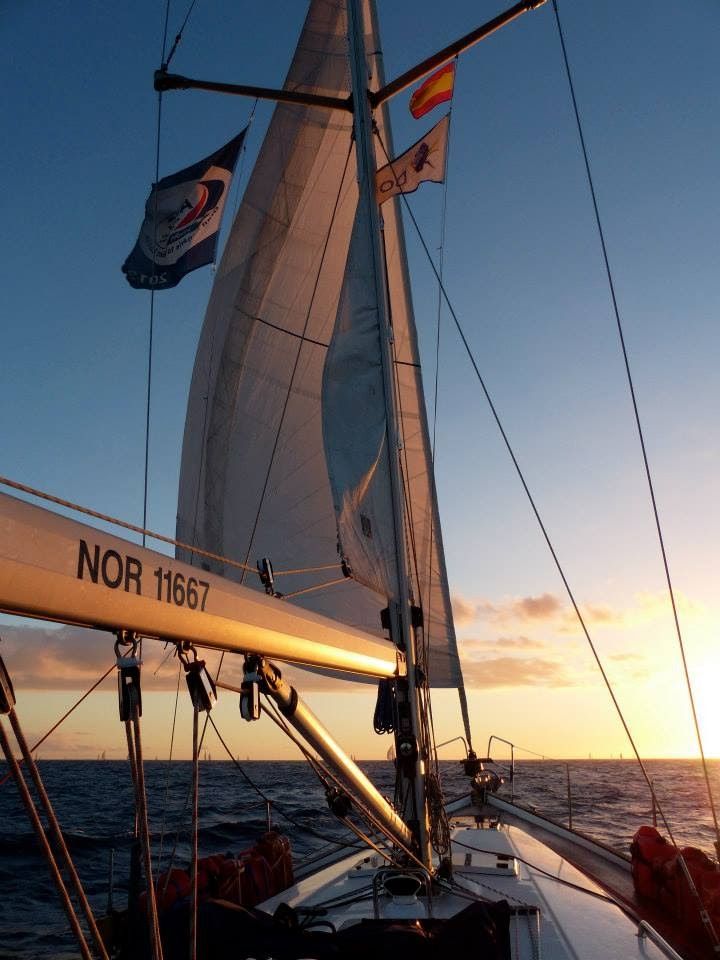
Working on board: A 24/7 routine
As a group of four, we worked in pairs on “watches”: In fair weather, we were on watch for 4 hours, then 4 hours off. In rough weather, we either had rolling watches (three people on deck with two hours on, one hour off) or shorter watches (3 hours on, 3 hours off). Obviously, all those routines apply 24/7. Here’s a typical schedule” on from 8pm-midnight, off til 4am, back at it from 4-8am, nap until lunch and get back at it after 12, and so on and so forth.
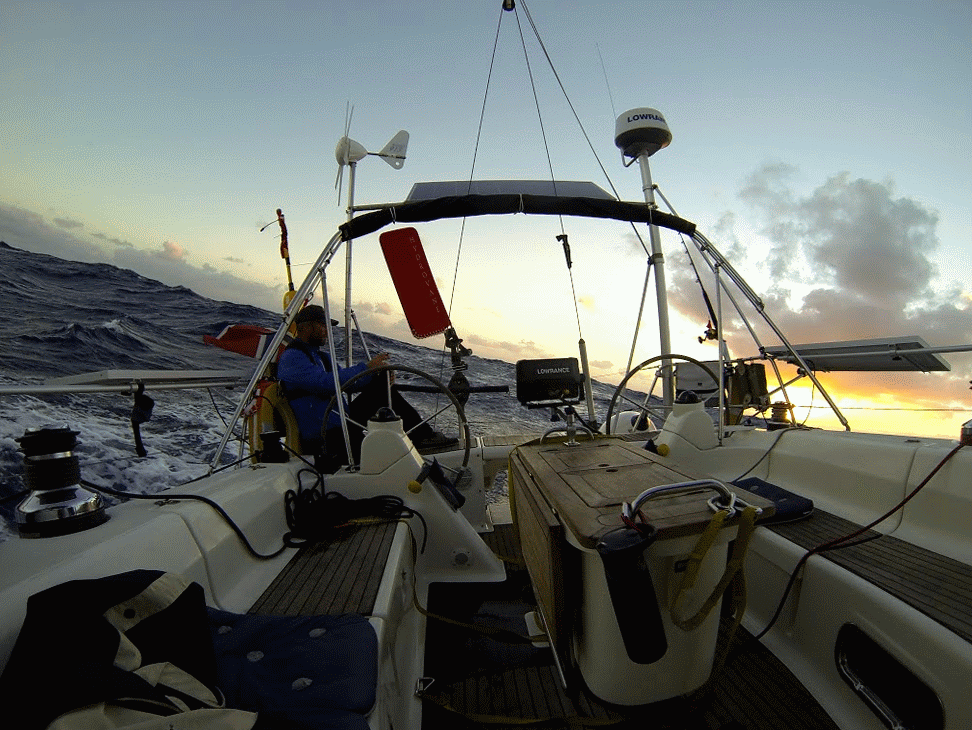
When you are on watch, you trim the sails, operate the radar if needs be, fix minor things and talk to the stars (optional). Dory was a well-equiped boat with two autopilots: an electrical one, and a Hydrovane (a beautiful wind-based auto-steering mechanism), both were extremely useful.
We sometime got smooth, sunny sailing, yet there was no norm. Weather changes fast, and local anomalies happen.
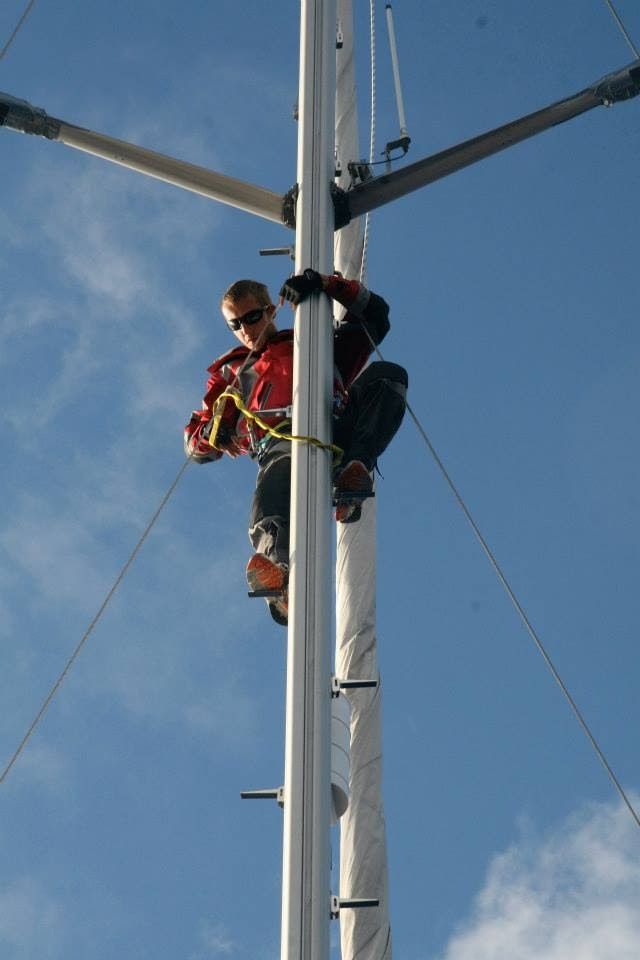
Another world
Spending about a month with no email/phone communication was quite refreshing (our trip was GPS tracked through Google Maps Yellow brick for friends and family).
– I saw 0 ads/commercials (others than branded items on the boat)
– My phone was in airplane mode at all times (only used as a MP3 player)
– I watched less than 2 movies (although we had 100s on board and many devices)
– I wrote more than I had in years, I read 14 books
The solitude helps you in setting sometime aside to think and reflect. Would I enjoy living my life this way on the long run? I don’t think so, but it was well worth trying.
Our sleeping and eating patterns revolved around what the weather was doing. We kept all our watches on UTC time for the entire trip, it was quite odd readjusting the time once we got to Saint Lucia (4 hours time difference). On shore, I usually get 8-9 hours sleep a night, onboard it takes some time to practice resting by 1, 2 or 4 hours break. After some time, just like in most situations: If you are tired enough, sleep will find you.
A little bit of magic
Sailing helps you discover a new kind of magic. Not all of it can be written down, I’ll try my best to explain it:
We sat in the cockpit at all possible hours of the day, it was fantastic. You get to see the stars, the Milky Way, the moon and dozens of shooting stars for hours. Below your feet, many thousands of meters of depth with strange and unknown creatures. Nothing around you, yet your tiny yacht is making way on a huge ocean. It’s a unique and privilege feeling to simultaneously have a huge and tiny space for yourself.
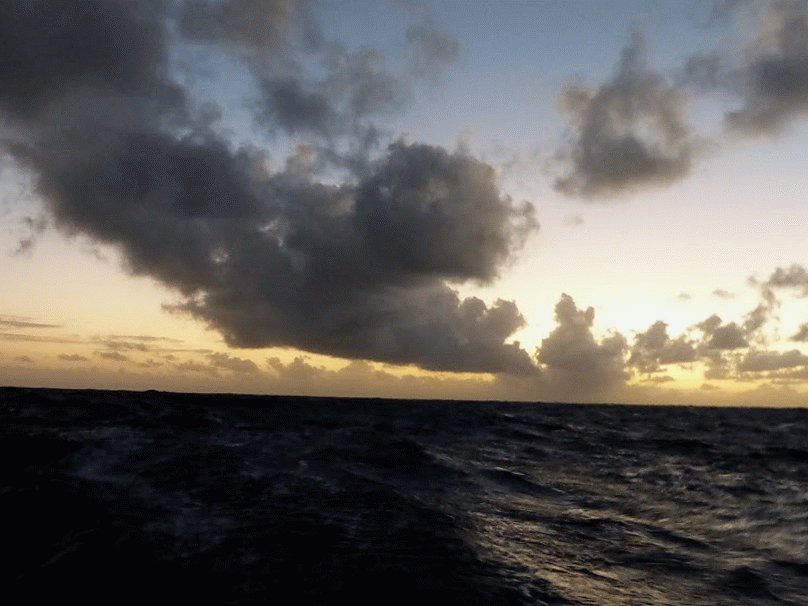
We spotted dolphin pods, swimming around Dory’s bow at dusk, being their playful selves. We saw wild birds, hundred of miles offshore, and wondered how they got there.
At night, Dory would often have fluorescent plankton in its wake, a beautiful bright green flow of light. We also got many fly fish around us—one of them decided to fly straight for me and landed on my shoulder. Very surprising to be hit by something in the middle of a conversation during a dark night!

You and your crew are on your own. About halfway through the trip, we took a swim on a quiet day. It’s a strange feeling to bathe and dip in those waters, when the closest land was over a week of sailing in any direction.
ARC is one of the safest way to go across, since 200 boats leave on the same day towards the same island. In theory, you’re never far from the others, but “not far” can be a few days away.
Sailing is like mountaineering—when you start your trip there’s no “pause button;” you need to make it to destination safely, and almost always without assistance. Cars can break and stop, planes can land, divers can go back to the surface. Sail boats must keep moving, from the moment they cast off until they are moored/secured. Sailing is a truly immersive experience in the long run; constant motion for almost a month is a unique feeling.
Back to life on land
On the morning of the last day, our 23rd day, we were closing in on Rodney Bay, St Lucia, about to finish a long and great trip. It’s hard to describe how much exitement and exhaustion affected us. The ARC team welcomed us on deck with a glass of Rhum and a fruit basket!
Here are some of the weird things that happen when you reach land after 3+ weeks at sea:
- Urge to eat a burger. “Yes ma’am, I’ll take extra bacon!”
- Walking for more than 5 meters is strange, and going for a long walk is exhausting
- You can’t help holding on to something when cooking/going to the bathroom
- Feeling slightly off balance for the first days
- Getting ridiculously exciting about good coffee and fresh laundry
- Developing a suspicious attitude towards any sailing-related sound (must keep an eye out!)
- Talking to new people is such a novelty
- Opening your emails will be overwhelming
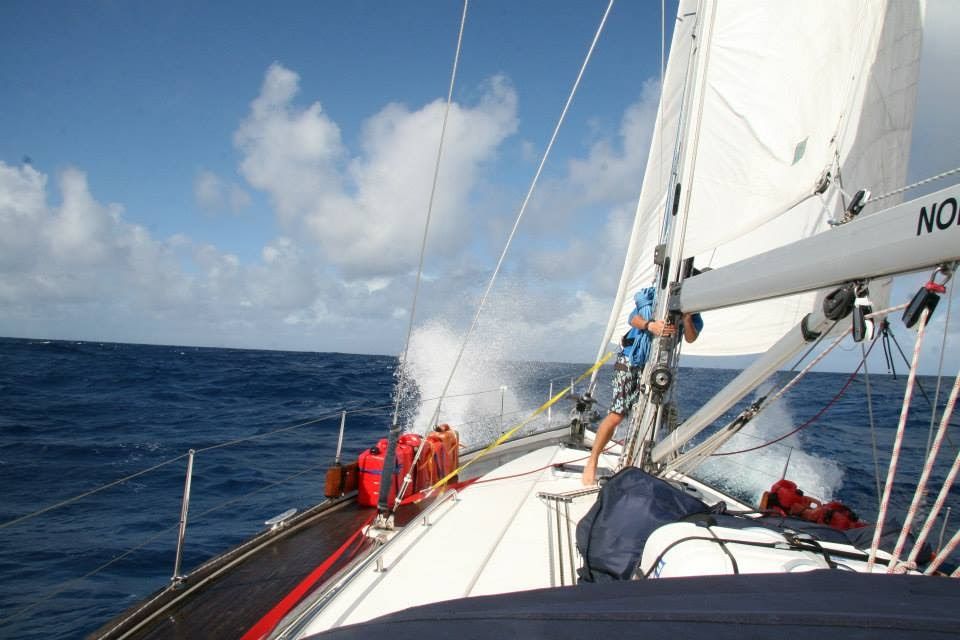
Closing thoughts
In 2009, finishing the Paris Marathon felt like a long-term project and effort, with weeks of preparation and a tough sustained effort on the day. Sailing redefines “long term”—you live around sailing instead of running around your routine. Both are extremely rewarding and quite humbling.
70% of the world is covered by water: make sure you get to experience life afloat. It’s an uppercut outside of your comfort zone, feeling amazed and humbled at the same time. We saw dead-flat water and 14+ meters high waves on the same trip. Together we managed to get a 16-meter long toy across one of the largest oceans.
These days, most of my time and activities are on land. But I still look forward to setting aside weeks and months in the years to come for sailing trips.
Have you ever embarked on a long-term adventure? I’d love to hear your tales in the comments!
This post is an excerpt of a series on my journey on my own blog. For more details and more adventures, check it out!
Try Buffer for free
140,000+ small businesses like yours use Buffer to build their brand on social media every month
Get started nowRelated Articles

TikTok's parent company must divest the app or face a ban in the U.S. Here's everything we know, plus how to plan ahead.

How the Buffer Customer Advocacy Team set up their book club, plus their key takeaways from their first read: Unreasonable Hospitality by Will Guidara.

In this article, the Buffer Content team shares exactly how and where we use AI in our work.